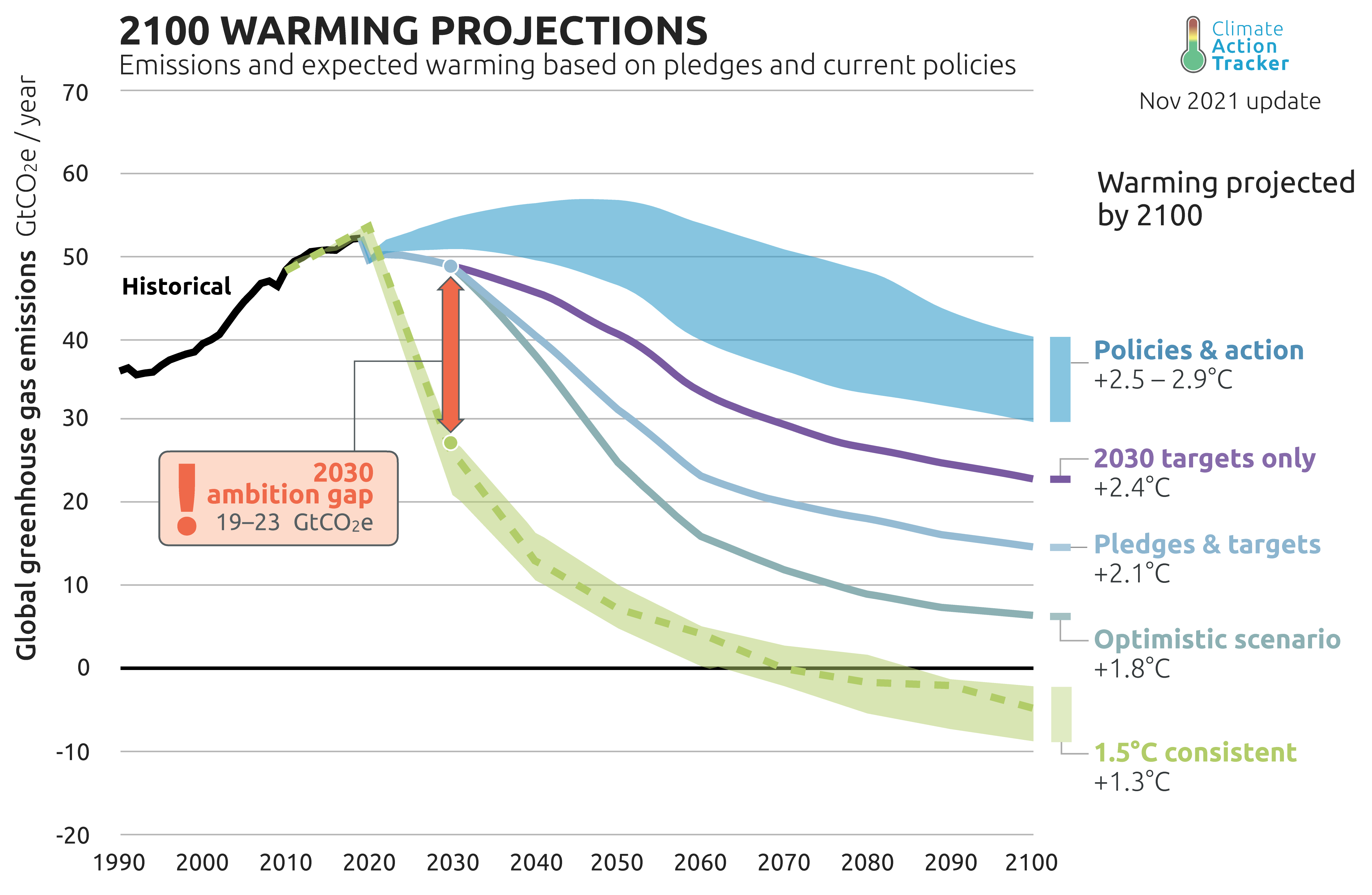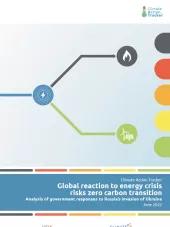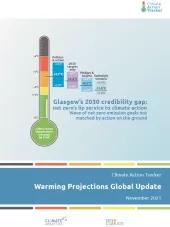Despite the clear warning on the extreme dangers of exceeding 1.5°C warming from the IPCC, progress on new, more ambitious 2030 climate targets and participation in sectoral initiatives have stalled since COP26 in Glasgow, the latest Climate Action Tracker briefing finds. This goes against the clear agreement of the Glasgow Pact to update national 2030 climate targets in 2022.
Without increased government action, the world will still emit twice the greenhouse gas emissions in 2030 than is allowed under the 1.5°C limit of the Paris Agreement. The world is heading to a warming of 2.4°C with 2030 targets and even higher, 2.7°C, with current policies.
With this looming emissions gap in 2030, it is important that all governments revisit and strengthen their climate targets. It is not enough for them to make marginal or no improvements.

Figure 1: Global greenhouse gas emissions pathways for CAT estimates of policies and action, 2030 targets only, 2030 and binding long-term targets and an optimistic pathway based on net zero targets of over 140 countries in comparison to a 1.5°C consistent pathway.
If the EU, the USA and China were to increase their NDC values by 5 to 10 percentage points, this would narrow the 17–20 GtCO2e gap by a further 3–4 GtCO2e or around 20%. The EU would be a primary candidate for being the first large country to update its NDC, as the agreement to increase the renewable target would lead to overachievement of the NDC.
Governments need to take several steps to update their climate targets in 2022. Ultimately, they need to submit a full updated NDC with a more ambitious target. Along the way they can participate in new sectoral initiatives and/or implement additional national policies, whose effect goes well beyond the originally proposed target—and then officially submit this information to the UNFCCC.










